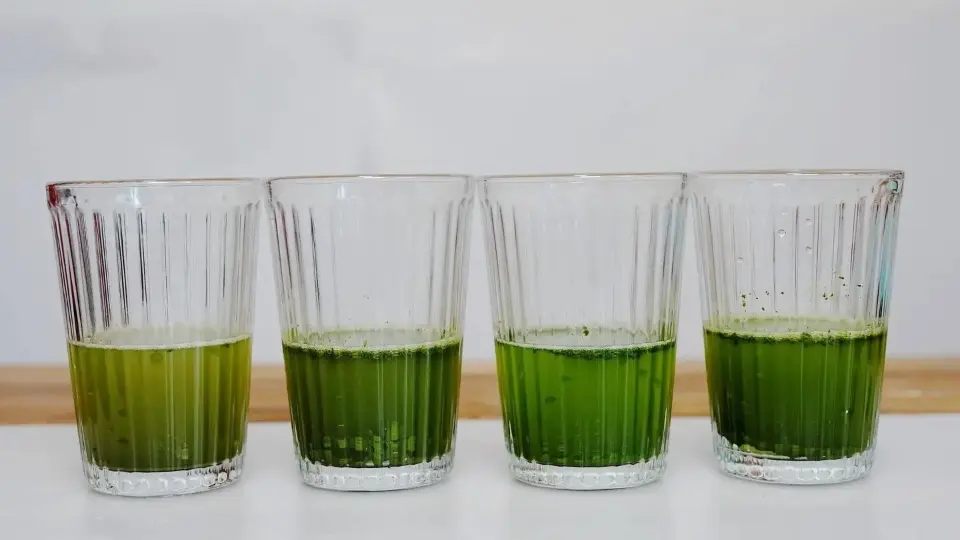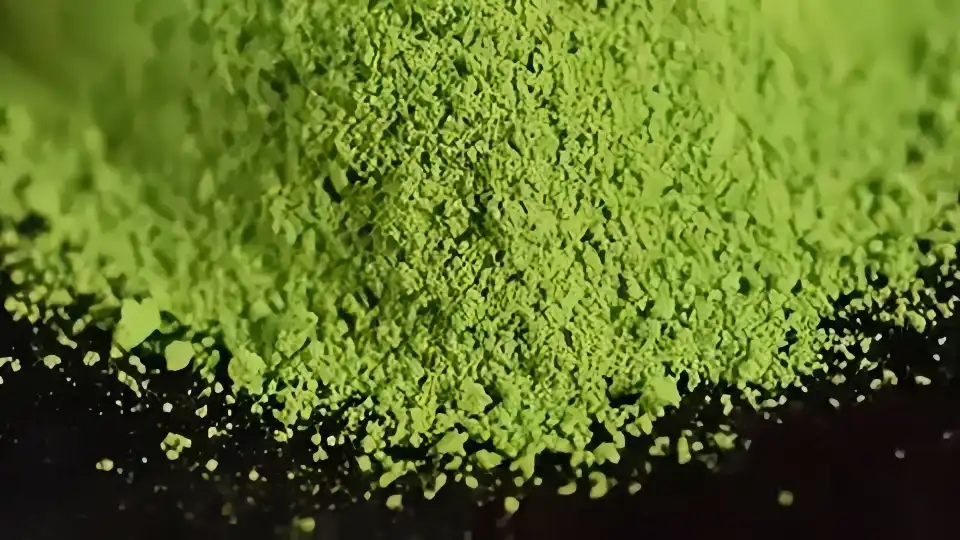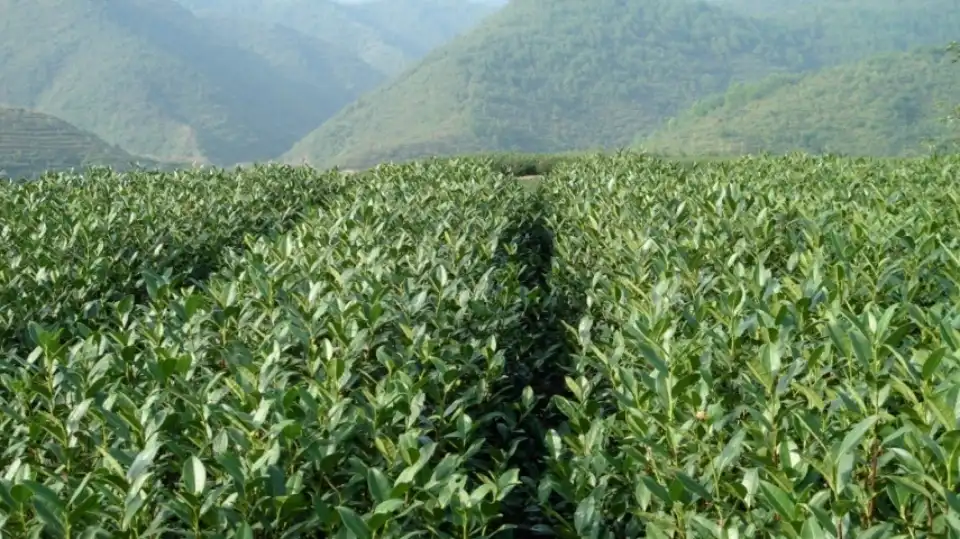What defines the superior quality of AAA Grade Matcha Powder?
Matcha, an essential for both our cooking and daily brewing, is typically graded, and high-quality matcha is determined by several key factors. High-quality matcha is characterized by a vibrant green color, a silky smooth texture, and a rich, complex flavor profile.
The Essence of AAA-Grade Matcha
AAA-grade Matcha, in particular, is made from the youngest, most tender tea leaves, meticulously shaded before harvest to boost chlorophyll content and enhance its nutritional value. These leaves are carefully selected, destemmed, deveined, and stone-ground into an ultra-fine powder that dissolves easily in water. This grade of matcha boasts a harmonious balance of umami, sweetness, and subtle astringency, without any bitterness. It also contains higher concentrations of beneficial compounds such as antioxidants, amino acids, and caffeine, making it the preferred choice for tea ceremony enthusiasts and health-conscious consumers seeking the ultimate matcha experience.

How Does High-quality Matcha Differ from Culinary-Grade Matcha?
Regardless of whether it is high-quality or for daily consumption, the raw material comes from the Camellia sinensis plant. The difference in quality, however, stems from the distinct production processes. High-quality matcha powder far surpasses culinary-grade matcha in several critical aspects.
Price and Quality Grade
Generally, entry-level culinary-grade matcha is sufficient for everyday cooking purposes, such as baking cakes or preparing meals. This matcha is relatively inexpensive, typically priced between $18–$20 per kilogram. However, High-quality matcha used in Japan for guest hospitality usually requires AAA-grade or higher. This quality of matcha is priced no lower than $35 per kilogram, with prices having no upper limit.
Cultivation and Harvesting Practices
Tea plants for AAA-grade and higher matcha are shaded for up to 20 days before harvesting. This process increases chlorophyll production and boosts the amino acid content of the leaves, especially L-Theanine, elements that provide the unique umami flavor and potential health benefits. In contrast, culinary-grade matcha may come from leaves shaded for a shorter period or not shaded at all.

Processing and Grinding
The leaves of high-quality matcha are meticulously destemmed and deveined before being ground into a fine powder to remove fibrous matter. This careful process results in an extremely delicate and smooth powder, with ground particles typically ranging between 5-10 microns. Culinary-grade matcha, however, may retain some veins and stems and is often ground using less precise methods, resulting in a rougher texture.

Color and Aroma
One of the most notable differences between matcha powders of different qualities is the color. AAA-grade matcha boasts a vibrant green color, indicating high chlorophyll content and meticulous processing. It also carries a fresh, grassy aroma and sweetness. Culinary-grade matcha often has a darker color, sometimes with yellow or brown hues, and may lack the complex aroma of the higher grade.
Flavor Profile
The flavor of AAA-grade matcha powder is complex and balanced, a perfect fusion of umami, sweetness, and subtle astringency. When brewed correctly, it should be entirely free of bitterness. While culinary-grade matcha also has flavor, it may carry a stronger bitterness or astringency, making it more suitable for recipes that require mixing with other ingredients rather than being consumed alone.
What Certifications Must High-quality Matcha Powder Meet?
When purchasing AAA-grade matcha powder, it is crucial to look for certifications that validate the product's quality, origin, and production methods. These certifications ensure you are receiving an authentic, high-quality product that meets stringent standards.
- ★ Organic Certification: Look for organically certified matcha. This ensures the tea was grown without synthetic pesticides, herbicides, or fertilizers, and is free from Genetically Modified Organisms (GMOs). For example, our Laicuherb AAA-grade Matcha Powder is 100% organic, guaranteeing product purity and natural quality.
- ★ JAS (Japanese Agricultural Standards) Certification: For matcha produced in Japan, JAS certification is a mark of quality and adherence to strict agricultural standards. This certification covers cultivation methods, processing, and packaging.
- ★ ISO (International Organization for Standardization) Certification: ISO certification indicates that the product complies with international quality management standards. Laicuherb holds ISO certification, ensuring our AAA-grade Matcha Powder is produced under strictly controlled conditions.
- ★ HACCP (Hazard Analysis and Critical Control Points) Certification: HACCP certification confirms that a company has implemented a systematic, preventative approach to food safety. This is vital for ensuring the matcha powder is produced under hygienic conditions and is safe for consumption.
- ★ GMP (Good Manufacturing Practice) Certification: GMP certification ensures that products are consistently produced and controlled according to quality standards. It covers all aspects of production, from raw materials to manufacturing facilities and equipment. Our AAA-grade Matcha Powder is produced in a GMP-certified facility, guaranteeing its quality and safety.
- ★ COA (Certificate of Analysis) and COI (Certificate of Inspection): These documents provide detailed information on the product’s composition, quality, and safety. The COA typically includes test results for various parameters, while the COI confirms the product has passed inspection and meets specified requirements.
- ★ HALAL Certification: For consumers who follow Islamic dietary laws, HALAL certification ensures the product complies with Sharia law.

When choosing matcha powder, it is essential to look for products bearing these certifications. They not only guarantee the quality and authenticity of the matcha but also provide assurance of its safety and production standards. Laicuherb is proud to hold certifications including GMP, HACCP, ISO, CNAS, COA, COI, and HALAL, allowing you to purchase our product with confidence.
Experience the Laicuherb Difference
Laicuherb combines Eastern wisdom with innovative technology to bring you the highest quality herbal health teas. Our Matcha Powder, sourced from the finest tea gardens and processed using traditional methods, offers a smooth texture and sweet taste appreciated by tea ceremony enthusiasts and health-conscious consumers alike. Whether you are a busy professional seeking a calm afternoon ritual, a health-conscious individual pursuing antioxidant benefits, or simply a matcha lover looking for the perfect cup, our matcha powder is guaranteed to exceed your expectations. To learn more or place an order, please email us at hello@laicuherb.com. Your extraordinary journey begins here.
References
- Kochman, J., Jakubczyk, K., Antoniewicz, J., Mruk, H., & Janda, K. (2021). Health Benefits and Chemical Composition of Matcha Green Tea: A Review. Molecules, 26(1), 85.
- Fujioka, K., Iwamoto, T., Shima, H., Tomaru, K., Saito, H., Ohtsuka, M., ... & Manome, Y. (2016). The Powdering Process with a Set of Ceramic Mills for Green Tea Promoted Catechin Extraction and the ROS Inhibition Effect. Molecules, 21(4), 474.
- Xu, P., Ying, L., Hong, G., & Wang, Y. (2016). The effects of the aqueous extract and residue of Matcha on the antioxidant status and lipid and glucose levels in mice fed a high-fat diet. Food & Function, 7(1), 294-300.
- Schröder, L., Marahrens, A., Koch, W., Hering, T., Krueger, S., Westendorf, J., & Steinbrenner, H. (2019). Effects of green tea, matcha tea and their components on cognitive function and brain health. Phytomedicine, 60, 152952.
- Unno, K., Furushima, D., Hamamoto, S., Iguchi, K., Yamada, H., Morita, A., ... & Nakamura, Y. (2018). Stress-Reducing Function of Matcha Green Tea in Animal Experiments and Clinical Trials. Nutrients, 10(10), 1468.
- Jakubczyk, K., Kochman, J., Kwiatkowska, A., Kałduńska, J., Dec, K., Kawczuga, D., & Janda, K. (2020). Antioxidant Properties and Nutritional Composition of Matcha Green Tea. Foods, 9(4), 483.
About the Author

The core content team at Laicuherb is a collective of experts, including health professionals, consultants in Traditional Chinese Medicine, and experienced content strategists. Some articles are authored by our brand's founders or R&D scientists. Our team has deep expertise in herbal health, integrating the wisdom of traditional medicine, modern nutrition, and women's health research to transform ancient wellness principles into practical, accessible content for everyday life.







